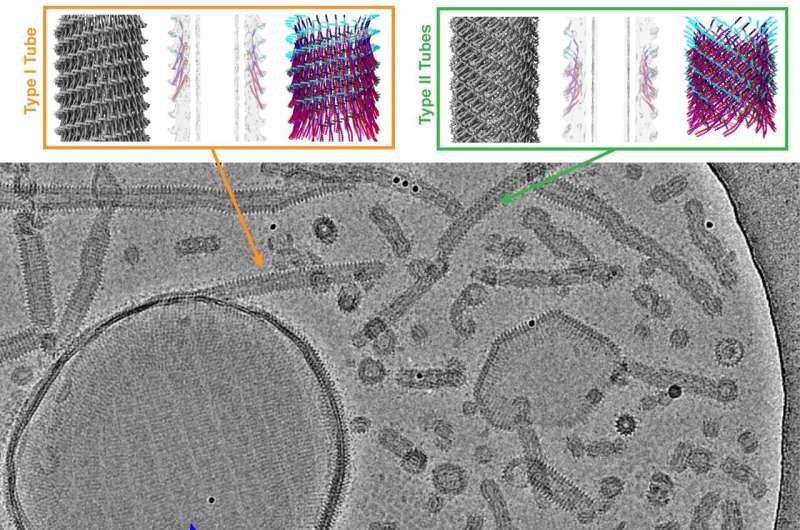Groundbreaking research from Forschungszentrum Jülich reveals fascinating new insights into how the cell membrane, a crucial structure in living organisms, protects itself and renews itself. Using advanced cryo-electron microscopy, scientists have uncovered the remarkable capabilities of the proteins Vipp1 and PspA, which play a vital role in stabilizing and repairing the cell membrane. This research could lead to the development of new biotechnological applications, such as the optimization of photosynthesis in plants and the design of novel biomaterials. Cell membrane, Photosynthesis, Biotechnology

Unveiling the Protective Powers of Vipp1 and PspA
The cell membrane is a delicate and crucial structure in living organisms, responsible for protecting the cell’s interior, facilitating nutrient absorption, and enabling communication between cells. However, this membrane is also highly susceptible to various stresses, such as physical pressure, chemical influences, and environmental factors like UV radiation and toxins.
Enter the proteins Vipp1 and PspA, which play a vital role in stabilizing and repairing the cell membrane. Researchers at Forschungszentrum Jülich have used cutting-edge cryo-electron microscopy to gain unprecedented insights into how these proteins work. They discovered that Vipp1 and PspA can adopt different structures, forming rings, tubes, and carpet-like formations that protect and strengthen the cell membrane. These findings shed light on the remarkable plasticity and adaptability of these proteins, which are essential for the survival of cells in both plants and bacteria.
Unraveling the Membrane Repair Mechanisms of Vipp1 and PspA
The researchers found that Vipp1 can form carpet-like structures on the cell membrane, effectively stabilizing and reinforcing it. Additionally, they observed that Vipp1 and PspA can assemble into ring complexes and tube-like structures filled with membrane material. These structures have the potential to ‘pinch off’ damaged membrane areas, as well as connect separate membranes.
Interestingly, the basic mechanism behind the actions of Vipp1 and PspA is highly similar to the ESCRT-III proteins found in human cells, which are also involved in membrane remodeling and repair processes. The fact that these proteins have remained largely unchanged throughout evolution underscores their crucial importance for cellular function.
These groundbreaking insights could pave the way for the development of new biotechnological applications, such as the optimization of photosynthesis in plants and the production of innovative biomaterials. By understanding the structure and function of Vipp1 and PspA, researchers may also be able to develop new drugs, including antibiotics, that target the processes within cellular membranes.
The Power of Cryo-Electron Microscopy in Unlocking Cellular Secrets
The research team at Forschungszentrum Jülich was able to gain these fascinating insights thanks to the use of state-of-the-art cryo-electron microscopes at the Ernst Ruska-Centre (ER-C). These advanced instruments enabled the researchers to study the proteins Vipp1 and PspA in atomic resolution, observing them in a remarkably high number of structural states and capturing their interactions with the cell membrane.
The findings from this research have the potential to significantly contribute to our understanding of the mechanisms underlying cellular processes, particularly in the context of membrane protection and repair. As these proteins are highly conserved across different organisms, a deeper understanding of their structure and function could lead to groundbreaking advancements in fields such as biotechnology, medicine, and plant science.
By unraveling the secrets of the cell’s repair system, this research from Forschungszentrum Jülich opens up new avenues for scientific exploration and the development of innovative applications that could profoundly impact our world.
